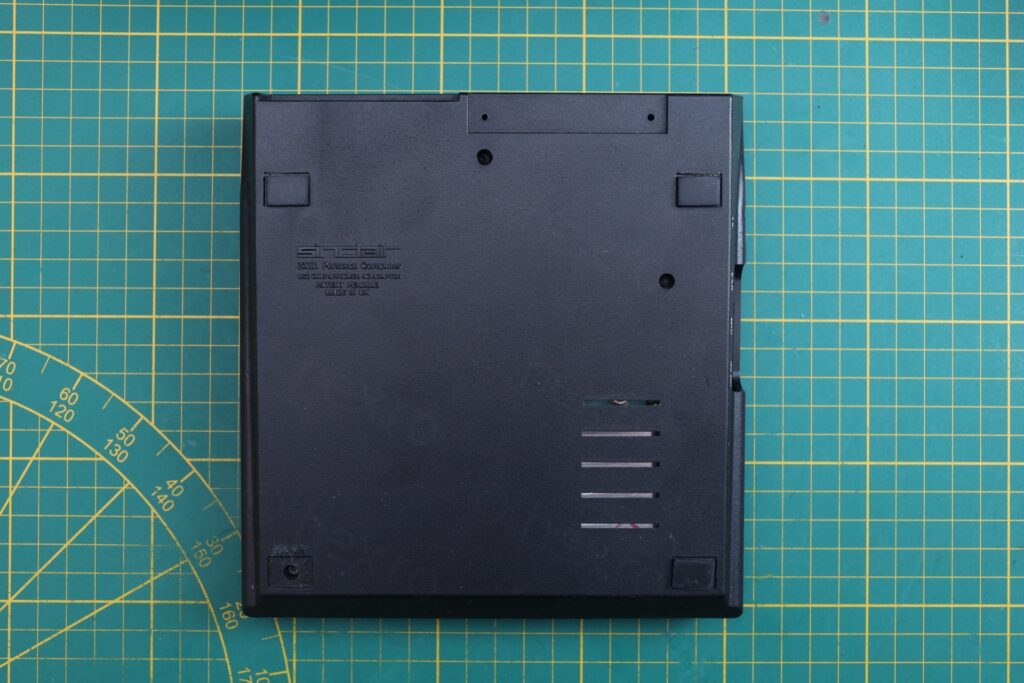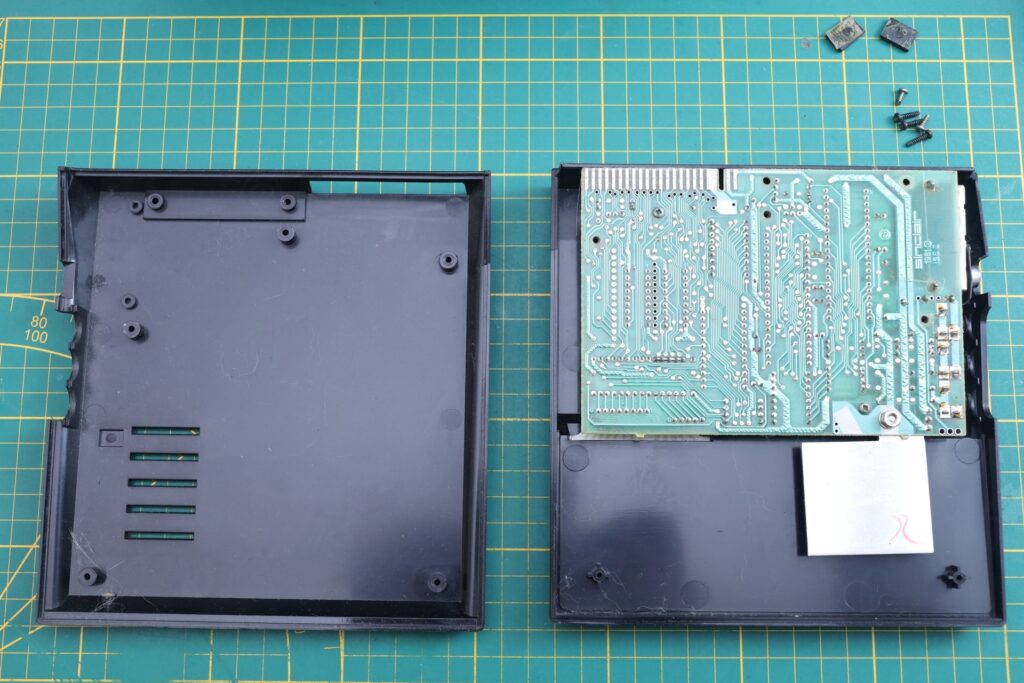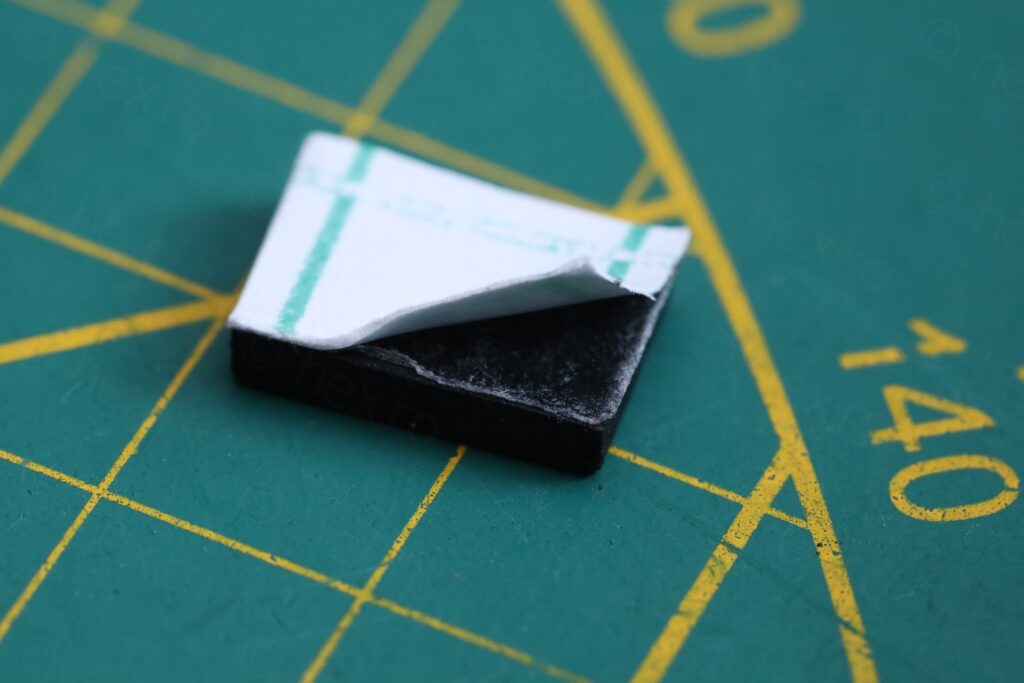Table of Contents
Introduction
This was an interesting finding on eBay – a ZX81 with a custom keyboard. Internet research brings it up as a “Filesixty” keyboard:




There weren’t many bidders on the announcement and for obvious reasons. The markings on some keys was smeared off. And it was also sold as untested. I still saw some value in the historical aspect of the keyboard – thus, I won.
Inverted Video Output
Since I bought it for the keyboard only, I decided to just power it on without preliminary checks. But it refused to work properly, the image was tearing and when I was finally on frequency, it appeared “inverted” – as in black background with white K cursor:
I thought it is defect (“untested” in the announcement) and proceeded to open it up and have a look around.
Motherboard
I found some dust and hair inside. The plastic case had some signs of people trying to get in and clean the extension port. It is an Issue 3 motherboard with two RAM chips:




The ICs were 2 of 2114L RAM chips, ZCM38818P ROM, the Z80A CPU and a FERRANTI 2C210E ULA:




But what caught my attention was a Video Mod based on the ZTX313 transistor:




Transistor seems original – not a recent mod for sure. Is there something on the internet documenting this ? And to my surprise, it is: https://www.sinclairzxworld.com/viewtopic.php?t=3457. As user 1024MAK explains there, the French TVs expect an inverted signal. Is a factory mod for computers sold in France.
This got me scrambling through my small CRT TVs collection – and found one saying CCIR / French:


Switched it French – and to my surprise – the computer works!!
Not only that it works, but the image is very sharp (too bad a digital photo doesn’t do it justice):


To wrap up this section, below the “Open Air” temperatures of the ICs after few minutes. ULA 2C210E seems a little cooler than the previous ZX81, running at 70C vs 78C the previous one did.






Computer draws about 320mA when running.
3D Printed ZX81 Rubber Feet
One thing that was annoying was that it had a missing rubber foot (you can see it when I type the Shift-P in the video above).
I can’t seem to find rubber feet being sold Europe. All announcements are in UK. And they are not expensive – I see prices of 2-3£ for a set of 4. However, the shops are not integrated with the IOSS System in Europe. I’d have to pay VAT on the purchase when they arrive, then Customs duties, etc. It gets very expensive very fast. I have wrote a message to European seller of ZX Spectrum parts and got some positive feedback. It may be they will start offering these for purchase in the future, but what to do ?
I decided to 3D print some rubber feet out of TPU material:







My printer was not designed for printing TPU, and it took some trial and error. It is a Monoprice V2 Mini – and I used the settings from this “How to Print TPU on a Basic 3D Printer” video.
It took many failed prints until I realized why sometimes the print would fail. I started printing as the printer was still hot, it failed. But if I waited a while between prints, then the print was fine.
The fix is just to just push the filament in by hand before a new print. You can’t do this with normal filament, but with TPU, if the print head is still hot, then I could still push in 2-3cm of filament by hand until I felt resistance.


I then had to order some double sided sticky paper that I could easily cut. I stayed away from double sided sticky tape. I first cleaned the old remains with some label remover and cleaned all 3 rubber feet too. Then attached freshly cut double sided sticky paper:









Results are good:
The TPU rubber feet are stiffer than the normal rubber feet – and more slippery. But, as long as the computer stays flat – I’m not complaining. I’d like some real rubber ones, but until then, I printed few more for other repairs.
I did not keep track of the real size of the rubber feet. The current measures in FreeCAD are 13.4×9.5×2.4. With the original size, the printed foot was a tad smaller than the real one, so I increased dial a bit the values so that they would match..
In conclusion, I now hold a half “smeared” piece of computing history 🙂




Leave a Reply